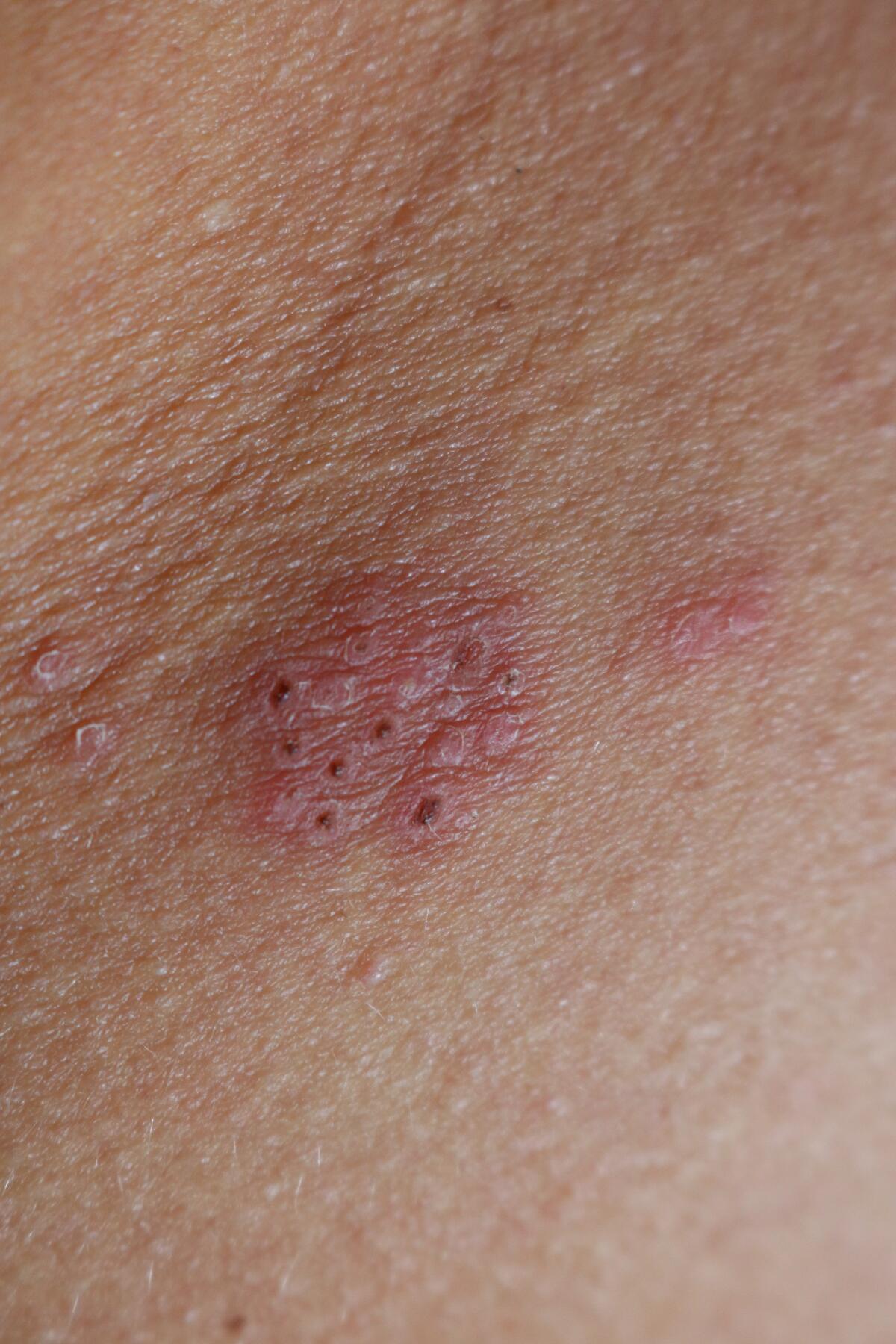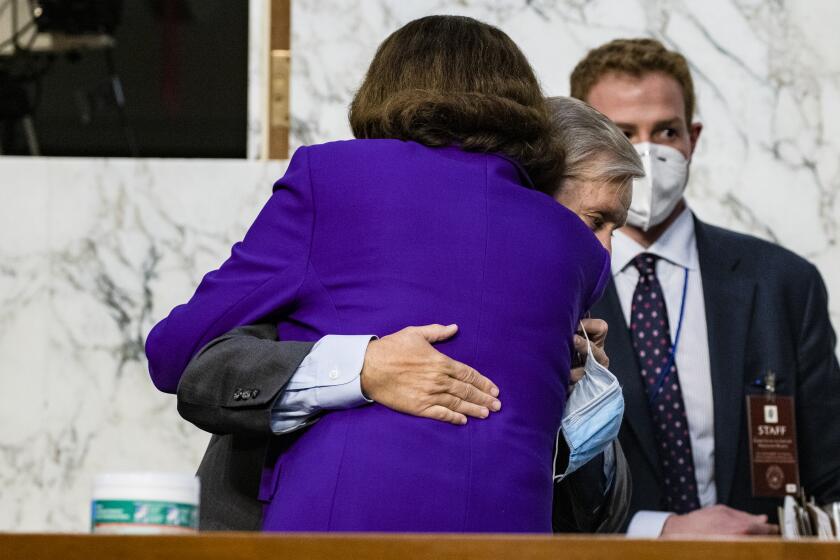Why is it taking so long for Dianne Feinstein to recover from shingles?

Growing up in San Francisco in the 1930s and ’40s, Dianne Goldman weathered outbreaks of polio, diphtheria, whooping cough, measles, mumps and chickenpox. With vaccines for many childhood diseases still at least a decade off, scourges like these claimed more than a fourth of the world’s youth before they reached puberty.
Now one of those maladies has caught up with Dianne — who, at age 89, is better known as Sen. Feinstein. Shingles — caused by a virus left behind after a case of chickenpox — threatens to end the storied political career of California’s longest-serving senator.
In early March, Feinstein announced that she was hospitalized for shingles, roughly two weeks after coming down with the painful, blistering rash that heralds the reawakening of the long-dormant varicella zoster virus.
Feinstein’s office has offered no further details about the course of her illness or the extent of her impairment. The senator is known to have had a cardiac pacemaker implanted in 2017. There have been widespread rumors that a decline in her cognitive health has compromised her ability to fulfill her Senate duties, but neither Feinstein nor her staff has addressed those concerns recently.
For now, at least, shingles appears to explain her absence from the Senate.
Little has been disclosed about Sen. Dianne Feinstein’s prolonged absence, leaving her 40 million constituents in the dark about her health status.
A case of shingles can visit two weeks of burning agony on a younger patient before it goes away on its own. But in older patients, it’s far more likely to last longer and to leave chronic nerve pain in its wake.
“This is the one disease we vaccinate against despite the fact that it doesn’t really kill people,” said Mayo Clinic geriatrician Dr. Amit A. Shah. “The reason is because it can be terribly painful, sometimes for weeks and months. For some, it never goes away and can be disabling.”

For anyone who had a bout of chickenpox (or varicella) as a child — and that means virtually every American now over the age of about 30 — the threat of shingles begins to escalate around the midcentury mark. Over a lifetime, an unvaccinated person who once had chickenpox has a roughly 1-in-3 chance of developing the painful, blistering rash.
While the rash most often spreads across one side of the scalp, neck, back or buttocks, the reactivated varicella zoster virus is capable of even worse mischief.
In as many as 20% of cases, the virus can travel up the optic nerve and enter the eye, causing severe eye pain, glaucoma or vision loss. In rarer cases, it can enter the brain, causing inflammation and swelling that can result in stroke-like symptoms. In people with extremely compromised immune systems, the virus can cause a rash across both sides of the body, a sign that it may be entering and attacking organs.
Any of these worst-case scenarios would land a shingles patient in the hospital. And any are likely to leave a patient worse off for some time.
California Sen. Dianne Feinstein faces calls to forfeit her senior role on the Judiciary Committee as Democrats slam her performance at Amy Coney Barrett’s hearing.
For his oldest patients especially, Shah said, “it is devastating. You have to give patients six months or more to figure out where they land.” As many as half of those who get shingles at the age of 85 or over will end up with damaged nerves and chronic nerve pain, studies show.
To treat that pain, doctors prescribe a wide range of drugs that can cause sedation and dizziness. For seniors especially, some of those can raise the risk of falls and other mishaps that can be the undoing even of seniors who are still largely healthy, said Dr. David H. Canaday, an infectious-disease physician at Case Western Reserve University medical school.
“We see it in patients even who are not very elderly or frail,“ Canaday said. “If something afflicts you that makes you move less, become less active for awhile, that can start a tremendous downward spiral.”
A case of shingles also raises the risk of stroke and heart attacks. In a study published in December, researchers from Brigham and Women’s Hospital in Boston found that people who suffered a bout of shingles were 30% more likely than those who did not to have a cardiovascular event that required hospital treatment. The heightened risk persisted for at least 12 years after shingles had gone away.
History will be a lot kinder to Sen. Dianne Feinstein than today’s dismal approval polls.
For some patients who recognize shingles quickly, a prompt course of antiviral drugs can shorten the infection’s course and lessen its severity. But prevention is a better bet.
In 2017, the U.S. Food and Drug Administration approved a two-dose vaccine capable of preventing shingles in adults ages 50 and over for at least a decade. Large clinical trials found that Shingrix reduced the risk of shingles by 97% in people 50 and older, and by 90% in those 70 and older. It has replaced an earlier but less effective vaccine of a different design, Zostavax, which had been available since 2006.
While there is some evidence for a link between shingles and subsequent dementia, that relationship is still murky.
Dr. Sharon E. Curhan, who led the research team linking shingles to cardiovascular events, has combed through years of data collected by the Nurses’ Health Study and several large studies that built on it. Her team has explored whether cognitive decline is more common after a case of shingles. The findings are expected to be published soon.










